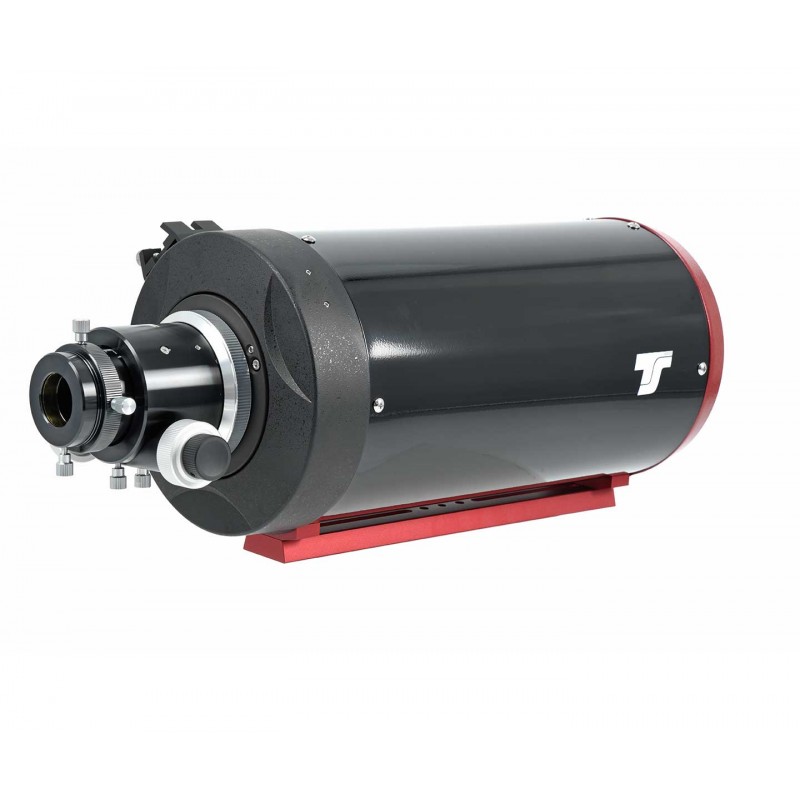
Reference: ZWEAF-N
Brand: ZWO
Reference: ZWEAF-N
Brand: ZWO
Reference: POA-URANUS-C
Brand: Player One
Reference: POA-ACS
Brand: Player One
Reference: AS-FRA400
Brand: ASKAR - Sharpstar
Reference: ZWASI120MINI
Brand: ZWO
Reference: AS-SET-DUO-D1D2
Brand: ASKAR - Sharpstar
Reference: ZWDC-Y-SPLIT
Brand: ZWO
Reference: AS-REDFRA400
Brand: ASKAR - Sharpstar
Banner







TS 6" f/9 RC astrograph and travelling telescope - compact Ritchey-Chrétien telescope with 154 mm aperture and 1370 mm focal length - very well suitable for astrophotography.
 security
security
100% Secure Payment
 Delivery policy
Delivery policy
Express shipping of in-stock parts
 RETURN POLICY
RETURN POLICY
Express shipping of in-stock parts
En Bref
|
Most large professional telescope are constructed according to the RC principle. Until recently, these telescopes were unaffordable for amateurs. RC telescopes from Teleskop Service are primarily aimed to amateur astronomers with photographic interest.
These telescopes are perfectly suited for high-resolution astrophotography. Of course, an RC can also be used for visual observing. Here, the large corrected field of view is noticeable, too. In total, the stars are sharper than, for example, in a Schmidt-Cassegrain.
Reaching focus is not a problem on the RC. Without extension sleeves, the back focus from the 2" connection is about 159mm. But included are three M90 extension sleeves (1x 50mm 2x 25mm) which are simply screwed between the focuser and the tube. This allows you to focus any accessory, starting from 1.25" and 2" zenith mirrors but also various correctors and all common cameras.
Quartz glass does not change its dimensions if temperature changes. When the temperature changes slowly during an exposure, other mirror substrates, like Pyrex, tend to a deformation of the mirror and thus to a shift of the focus. This problem does not exist for mirrors of quartz glass. Thus the focus is better maintained which is very important for long exposures. Both mirrors are coated with 99% reflectivity. The image is obviously brighter than the one of telescopes with only 90% or 94% reflection layer.
The TS RC astrographs are true Ritchey-Chrétien telescopes. Maksutovs and Schmidt-Cassegrains have spherical mirrors and need correctors for making a large field usable. With Schmidt-Cassegrains, you can see the aberrations in the field even when working visually. Most times, Maksutov-Cassegrains are so slow that they are not suitable for astrophotography. RC telescopes have hyperbolical primary and secondary mirrors. They are more difficult to manufacture, but offer a significantly sharper field with less aberrations throughout the field.
Celestron EHD or Meade ACF telescopes need a corrector. Additionally, these telescopes have a Schmidt plate at the front side which is prone to dew. The RC is a pure reflection system without lenses in the light path. Thus you can use the complete light even in the infrared range. The image is brighter and the exposure times get shorter. The field of an RC telescope is coma-free by design and relatively flat.
Telescopes with focusing via movable primary mirror often suffer from the "shifting problem". The image shifts while focusing or even jumps. By now, Meade and Celestron have the problem under control, but the effect is noticable nonetheless. TS RC telescopes do not have this problem, as their primary mirror is fixed. Focusing is done via a high-quality focuser. An additional advantage is the optimal distance from primary to secondary mirror. This gives you the guarantee of the best possible image. If the primary mirror moves relatively to the secondary, you will practically never have the optimal distance.
No customer reviews for the moment.
Reference: TSRC8C
Brand: TSOptics
Reference: TSRC10T
Brand: TSOptics
Reference: TSRC10T64
Brand: TSOptics
Reference: KE096
Brand: Kepler
Reference: TSRC8M
Brand: TSOptics
Reference: ZWEAF-N
Brand: ZWO
Reference: CCD47
Brand: TSOptics
Reference: UA-BAHT-160
Brand: Kepler
Reference: TSCOLLIT
Brand: TSOptics

TS 6" f/9 RC astrograph and travelling telescope - compact Ritchey-Chrétien telescope with 154 mm aperture and 1370 mm focal length - very well suitable for astrophotography.
check_circle
check_circle